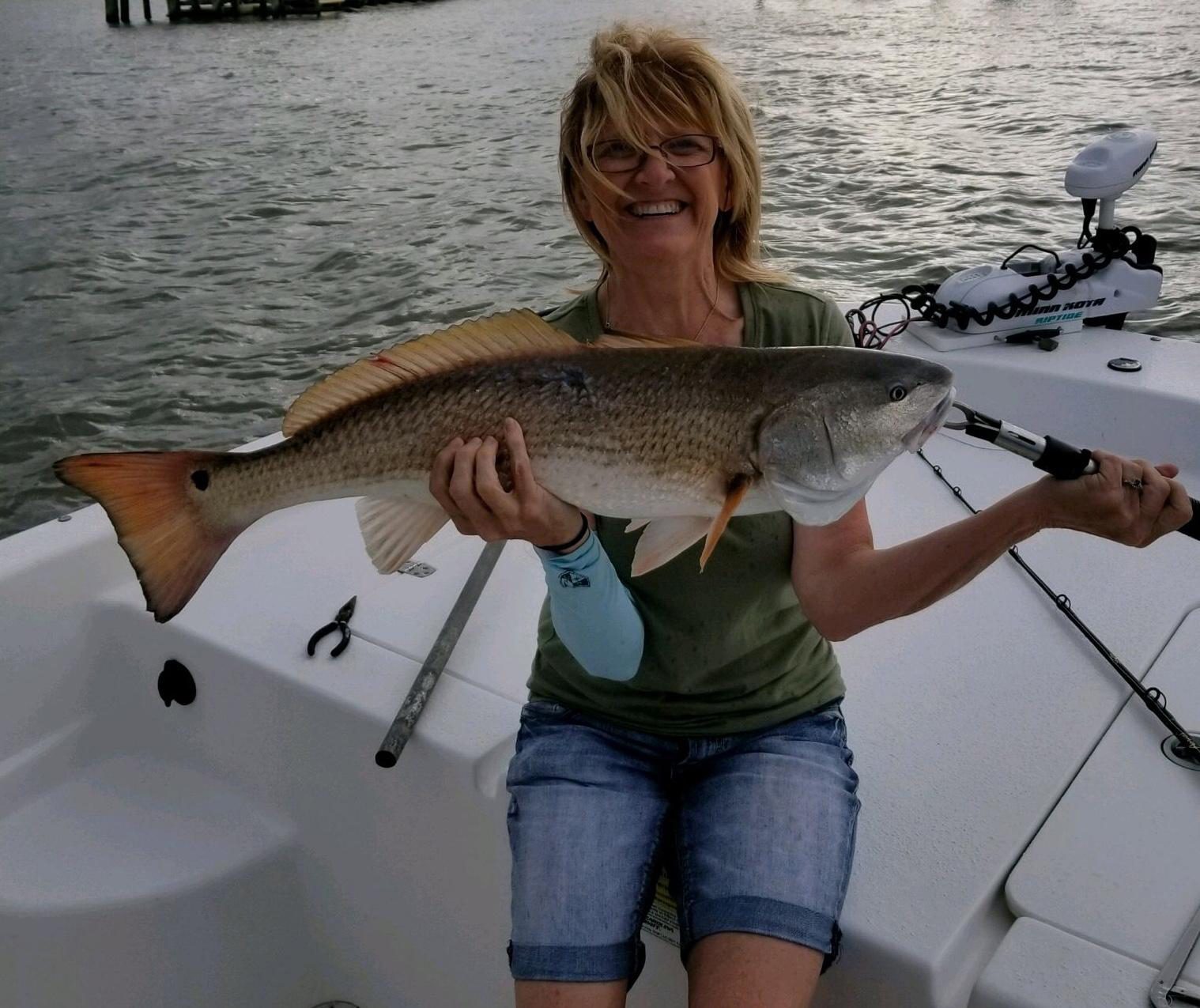Carolina Beach – Aug 16, 2018
Colton, of Island Tackle and Hardware, reports that the water in the area is still dirty, and so fishing has been slow. Overall, anglers are finding their typical summer catches, just in smaller numbers.
Flounder of all sizes are coming from the river, with throwbacks and citation-sized fish equally as common. Bigger redfish are staging up in the inlet, while sheepshead and black drum can be found around bridges, docks, and structure.
The main story in the surf has been big pompano, with little else coming in.
Decent catches of flounder can be found on nearshore structure.
Bigger kings have been found here and there in the nearshore and offshore waters, but the catch has been spotty.
Christian, of Seahawk Inshore Fishing Charters, reports that a few reds have been found inshore, with a mixed bag of lower and upper-slot fish being caught. Solid structures such as oyster beds and shell bottoms are great places to look, as are deep, hard-bottomed holes. Finger mullet are producing the most fish.
Black drum are being caught in holes near structure, as well as the similar areas as the reds. The black drum are also a mix of sizes, with plenty of 15-16” keepers and 20-22” fish, but a few throwbacks as well. Fresh cut shrimp works best.
Throwing Gulp shrimp or Z-man PaddlerZ on a 1/4 oz. jig head will work for catching flounder, which are hanging out in creek mouths with moving current. Live mullet on bottom rigs will also work.
Ladyfish and bluefish are in the river, and when conditions are right, you can find them schooled up and feeding on top. Almost any colorful soft plastic or metal jig will produce bites.

Susan Darnell with a 9 lb. 2 oz. red that fell for a piece of cut bait in the ICW near Carolina Beach before being released back into the wild.
Guion, of Green Creek Outfitters, reports that nearshore spanish fishing has been on fire, and casting has been producing bigger fish than trolling. Throwing smaller lures like Blue Water Candy Spanish Candies, Stingsilvers, and diamond jigs to surface feeding fish is sure to get attention.
Flounder fishing on the nearshore wrecks has been phenomenal now that the water has cleared up and conditions have improved. Consistent 10-20 fish days are common, and almost all of the fish have been a solid 18-22”. Carolina-rigging live baits has worked just as well as bucktails. If you prefer to go artificial, tip a 1.5-2 oz. Spro bucktail with a 3” shrimp combined with a Fat Cow jig strip, and you’ll be tearing up the flatties all day.
Big red drum (averaging around 40”) and the occasional slot red drum are also being caught on the nearshore wrecks and around the inlet jetties. The over-slot reds aren’t picky and will attack live or cut bait, which includes just about anything fresh that you can pick up from the bottom and cut in half.

Jim Hawkins with an over-slot redfish that was caught and released just outside of Masonboro Inlet while drifting live mullet on the falling tide.
Rod, of OnMyWay Fishing Charters, reports that there have been some big spanish caught just along the beach.
King fishing with live bait in the 20-28 mile range has been producing plenty of fish, and quite a few mahi have fallen for the trolled live baits as well. Some cobia have been hooked in the 20 mile range, too. The ledges offshore of the Schoolhouse and south of WR4 (as well as 23 Mile Rock) have been holding plenty of fish. The key to finding them is to focus on the bluest water you can find, which may move as far as 5 miles in a single day.
The opening of American red snapper was productive in the 20-30 mile range in depths of 80-100’. A good mix of other bottom fish have been caught in the same stretch of water, with plenty of black sea bass, pinkies, and triggerfish all coming in.
Jesse, of Ocean Stinger Fishing Charters, reports that the spanish bite has been hit or miss within 5 miles of the beach, while kings (around 4′ in length) are being caught around 11 miles. Keeper kings are also being caught from 18 miles all the way to 35 miles.
The mahi bite has been pretty good lately from 24-29 miles, with areas like 23 Mile Rock and the waters to the southwest producing lots of nice fish. The key to finding the mahi is to first find clean blue water.
Trolling at normal speed while pulling a #3 planer rod with a small ballyhoo on a pink/crystal Sea Witch skirt will attract fish, and combining that with a trio of outriggers will increase chances. Sea Witches and Ilanders in combinations of blue, crystal, and pink colors have been great lures to use on the outriggers.

MacKenzie Williams (11), from Holly Springs, with a 44 lb. wahoo that she caught while trolling in the Gulf Stream with Capt. Daniel Monette, of Top Shelf Sportfishing.
Griffin, of Kure Beach Pier, reports that blues and spanish on shrimp have been the biggest catch, with most of the fish coming in during the morning. The water has been clear.
Abby, of Carolina Beach Pier, reports that some nice-sized flounder and whiting have been coming in on shrimp.
